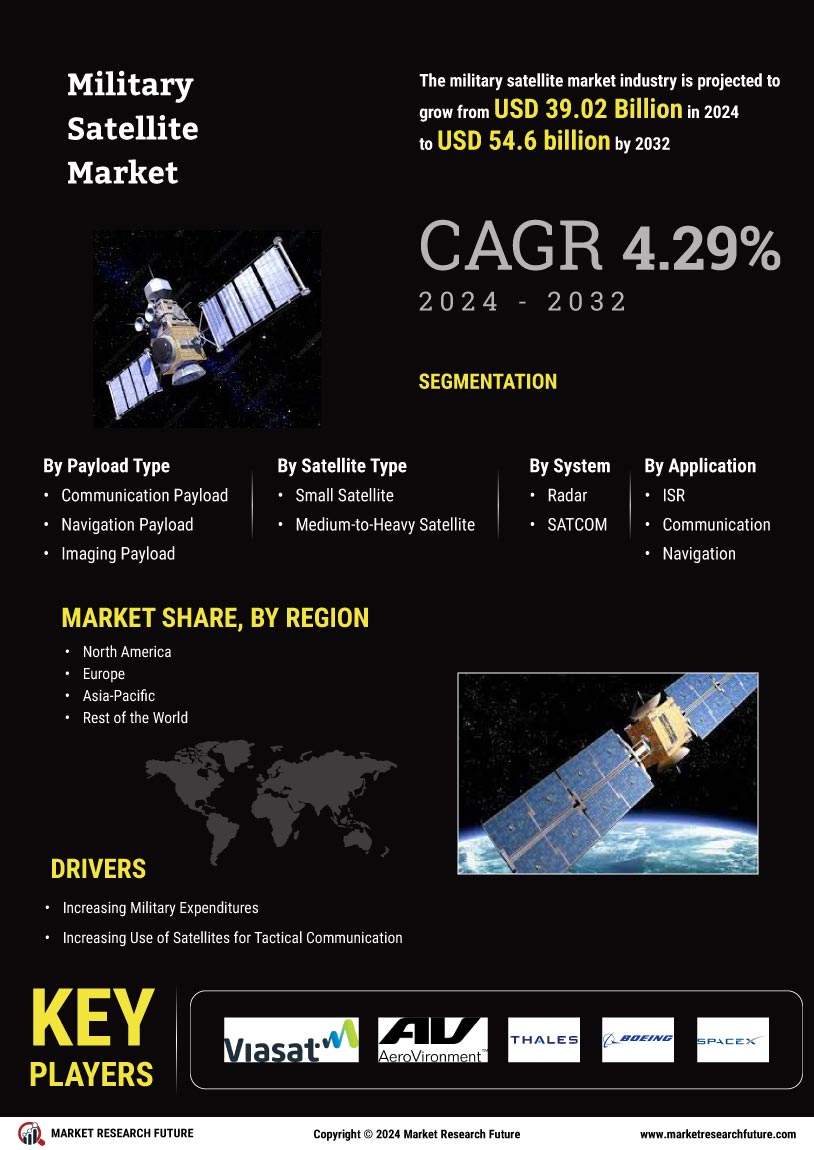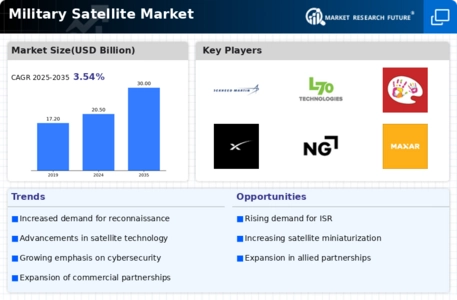North America : Dominant Military Satellite Leader
North America continues to lead the military satellite market, holding a significant share of 22.0% in 2024. The region's growth is driven by increasing defense budgets, technological advancements, and a focus on national security. Regulatory support from government agencies, including the Department of Defense, further catalyzes market expansion. The demand for advanced satellite systems for surveillance, reconnaissance, and communication is on the rise, reflecting the region's strategic priorities.
The competitive landscape in North America is robust, featuring key players such as Lockheed Martin, Northrop Grumman, and Raytheon Technologies. These companies are at the forefront of innovation, developing cutting-edge satellite technologies. The presence of established defense contractors and a strong investment in R&D contribute to the region's dominance. As military operations increasingly rely on satellite capabilities, North America is poised for sustained growth in this sector.
Europe : Growing Defense Collaboration
Europe's military satellite market is evolving, with a market size of 10.0% in 2024. The region is witnessing a surge in collaborative defense initiatives among EU member states, driven by the need for enhanced security and interoperability. Regulatory frameworks, such as the European Space Strategy, are fostering innovation and investment in satellite technologies. The increasing focus on joint military operations and shared intelligence is propelling demand for advanced satellite systems.
Leading countries in Europe, including France, Germany, and Italy, are investing heavily in military satellite capabilities. Key players like Airbus and Thales Group are pivotal in this landscape, driving technological advancements and strategic partnerships. The competitive environment is characterized by a mix of established defense contractors and emerging startups, all contributing to a dynamic market. As Europe seeks to bolster its defense capabilities, the military satellite sector is expected to grow significantly.
Asia-Pacific : Emerging Market Potential
The Asia-Pacific region is witnessing a burgeoning military satellite market, with a size of 6.0% in 2024. This growth is fueled by increasing defense expenditures, geopolitical tensions, and the need for enhanced surveillance capabilities. Countries in the region are prioritizing the development of indigenous satellite technologies, supported by government initiatives and investments. The regulatory environment is becoming more favorable, encouraging private sector participation in satellite development.
Key players in the Asia-Pacific market include countries like India, Japan, and Australia, which are making significant strides in military satellite capabilities. The competitive landscape is characterized by a mix of state-owned enterprises and private companies, all vying for a share of the growing market. As regional tensions persist, the demand for advanced military satellite systems is expected to rise, positioning Asia-Pacific as a critical player in the global market.
Middle East and Africa : Strategic Defense Investments
The Middle East and Africa (MEA) region is gradually expanding its military satellite market, currently valued at 2.7% in 2024. The growth is driven by increasing defense budgets and a focus on enhancing national security. Countries in the region are recognizing the strategic importance of satellite capabilities for surveillance and communication. Regulatory support from governments is fostering investment in satellite technologies, paving the way for future growth.
Leading countries in the MEA region, such as the UAE and South Africa, are investing in military satellite programs to bolster their defense capabilities. The competitive landscape is evolving, with both local and international players entering the market. As the region seeks to modernize its military infrastructure, the demand for advanced satellite systems is expected to increase, highlighting the importance of this sector in regional security strategies.

















Leave a Comment